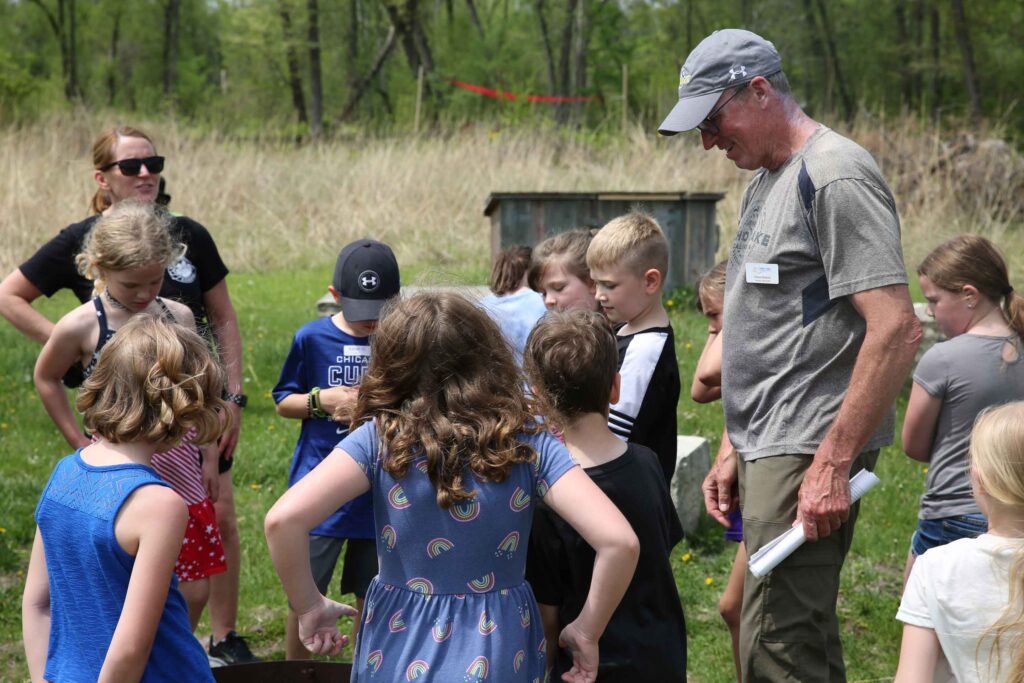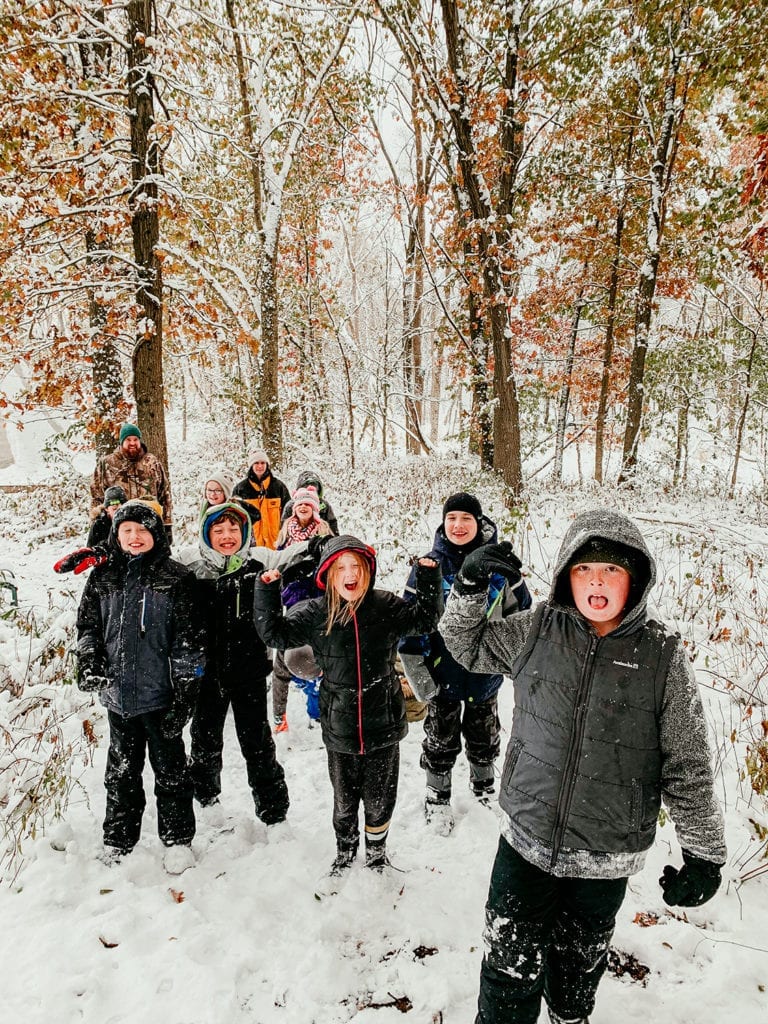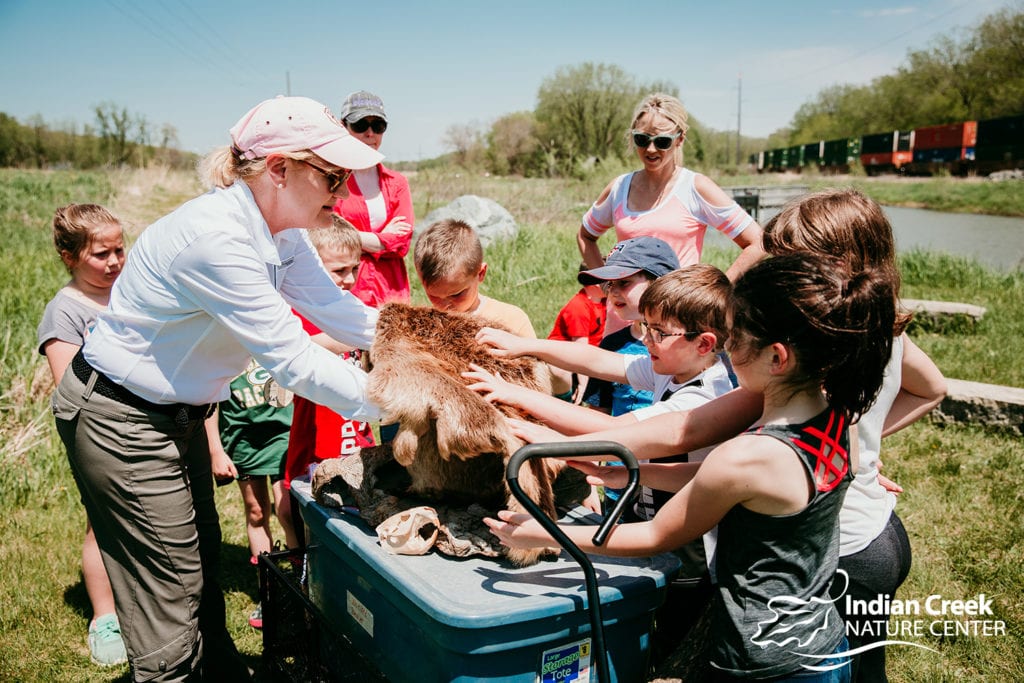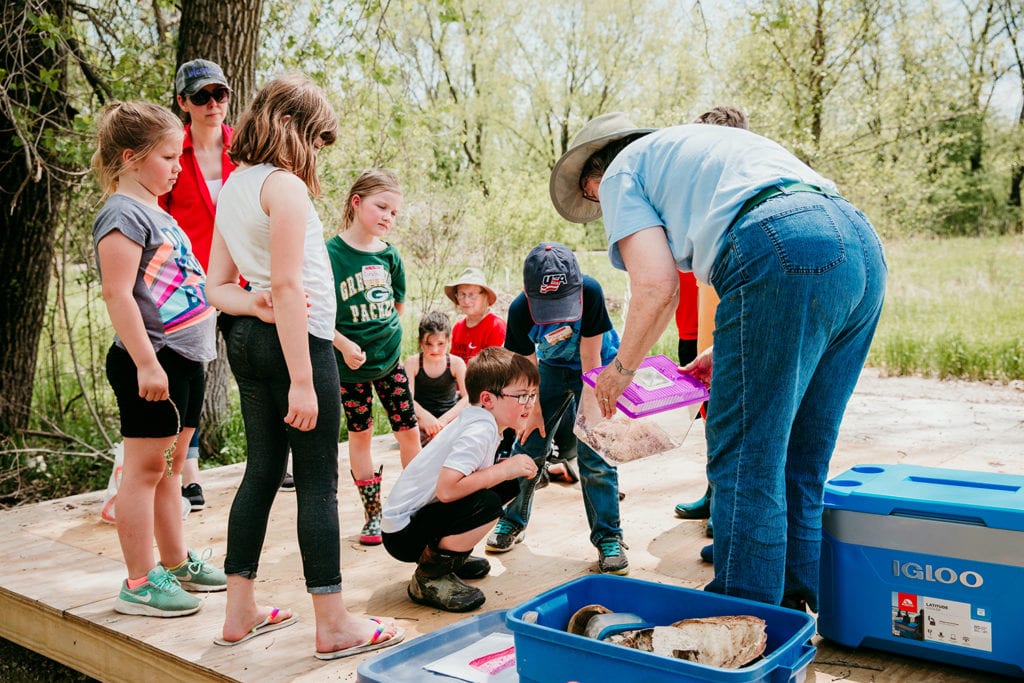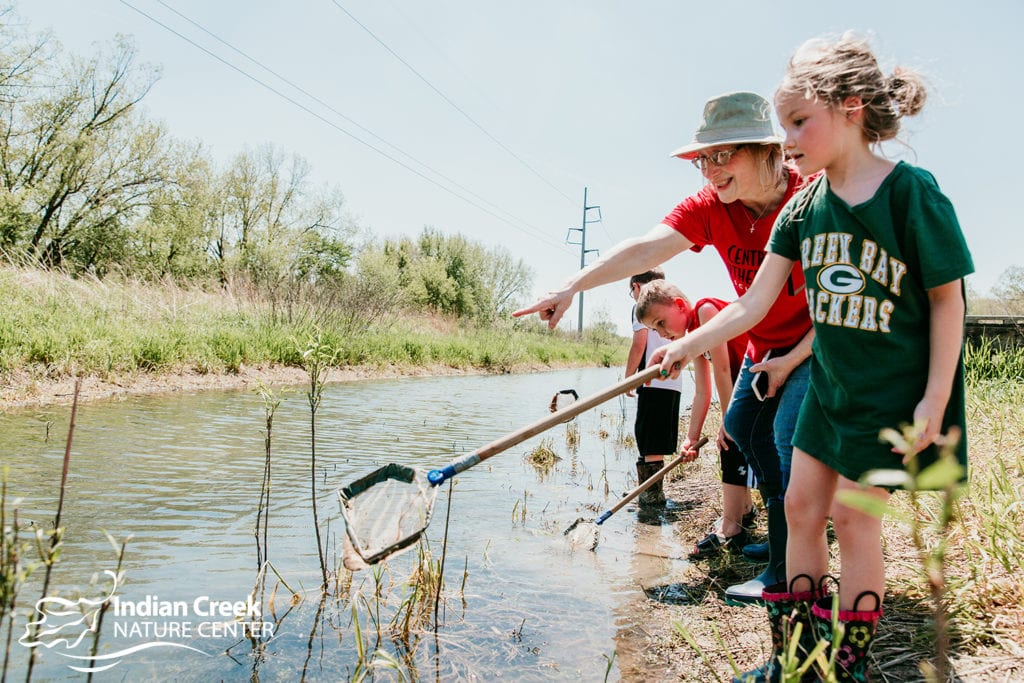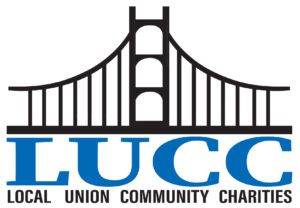Your program fee includes access to our exhibits and use of picnic areas. We welcome groups of all ages. Program capacity varies from 20-40 students and registration fees include up to 8 adults. Additional adults beyond the 8 included are $5 each. Our calendar fills quickly so use our online booking system to reserve your date now! Click below for more information and to book your field trip today!
Elementary School Field Trips
Fall
NGSS: (4th grade): ESS1.C The History of Planet Earth, ESS2.A Earth Materials and Systems, ESS2.B Plate Techtonics and Large-Scale System Interactions, ESS2.E Biogeology (5th grade): ESS2.C The Roles of Water in Earth’s Surface Processes, ESS3.C Human Impacts on Earth Systems
Common Core: (4th grade): CCSS.ELA-LITERACY.L.4.6 (5th grade): CCSS.ELA-LITERACY.L.5.6
Participate in hands-on experiments and explore geologic concepts, geologic timeline, rock cycles, mineral testing, fossil formation and a fossil dig. You will also demonstrate plate tectonics, and examine rock specimens and fossils from the nature center’s collection.
- Program Duration: 2 hours
- Fee: $5 per student + $15 material fee ($50 minimum)
- Capacity: 40 students and 8 adults per session
NGSS: (Kindergarten): K-ESS2-2 Earth’s Systems, K-ESS3-3 Earth and Human Activity (1st Grade): LS1.A Structure and Function; LS1.B Growth and Development of Organisms; LS1.D Information Processing, LS3.A Inheritance of Traits (2nd Grade): LS2.A Interdependent Relationships of Ecosystems, LS4.D Biodiversity and Humans; (3rd Grade): LS1.B Growth and Development of Organisms; LS2.C Ecosystem Dynamics, Functioning and Resilience; LS2.D Social Interactions and Group Behaviors; LS3.A Inheritance of Traits; LS3.B Variation in Traits; LS4.C Adaptation; LS4.D Biodiversity and humans (4th grade): None (5th grade): 5-PS3-1 Energy
Common Core: (Kindergarten): CCSS.ELA-LITERACY.L.K.6, CCSS.ELA-LITERACY.SL.K.6, CCSS.MATH.CONTENT.K.CC.B.4, CCSS.MATH.CONTENT.K.CC.B.5, CCSS.MATH.CONTENT.K.CC.C.6, CCSS.MATH.CONTENT.K.CC.C.7, CCSS.MATH.CONTENT.K.MD.A.1, CCSS.MATH.CONTENT.K.MD.A.2, CCSS.MATH.CONTENT.K.MD.B.3 (1st grade): CCSS.ELA-LITERACY.SL.K.6, CCSS.ELA-LITERACY.SL.1.2, CCSS.ELA-LITERACY.L.1.6, CCSS.MATH.CONTENT.1.MD.C.4, CCSS.MATH.CONTENT.1.G.A.1 (2nd grade): CCSS.ELA-LITERACY.SL.K.6, CCSS.ELA-LITERACY.L.2.6, CCSS.MATH.CONTENT.2.MD.D.9 (3rd grade):CCSS.ELA-LITERACY.SL.K.6, CCSS.ELA-LITERACY.L.3.6, CCSS.MATH.CONTENT.3.MD.A.2 (4th grade): CCSS.ELA-LITERACY.L.4.6 (5th grade): CCSS.ELA-LITERACY.L.5.6
Observe honeybees and their activities within the indoor observation hive, including worker bees, the queen and drones. Discussion includes honey bee life cycles, bee adaptations, the value of pollination, the relationship between flowers and bees and beekeeping. You’ll also participate in a pollinator hunt and view an outdoor bee hive.
- Program Duration: 1.5 hours
- Fee: $5 per student ($50 minimum)
- Capacity: 40 students and 8 adults per session
NGSS: (Kindergarten): LS1.C Organization for Matter and Energy Flow in Organizations, ESS3.A Natural Resources, ESS3.C Human Impacts on Earth Systems (1st grade): LS1.A Structure and Function, LS1.B Growth and Development of Organisms, LS1.D Information Processing, LS3.A Inheritance of Traits (2nd grade): LS2.A Interdependent Relationships in Ecosystems (3rd grade): LS1.B Growth and Development of Organisms, LS3.A Inheritance of Traits, LS3.B Variation of Traits, LS4.B Natural Selection, LS4.C Adaptation, LS4.D Biodiversity and Humans
Common Core: (Kindergarten): CCSS.ELA-LITERACY.L.K.6, CCSS.ELA-LITERACY.SL.K.6, CCSS.MATH.CONTENT.K.CC.B.4, CCSS.MATH.CONTENT.K.CC.B.5, CCSS.MATH.CONTENT.K.CC.C.6, CCSS.MATH.CONTENT.K.CC.C.7, CCSS.MATH.CONTENT.K.MD.A.1, CCSS.MATH.CONTENT.K.MD.A.2, CCSS.MATH.CONTENT.K.MD.B.3 (1st grade): CCSS.ELA-LITERACY.SL.K.6, CCSS.ELA-LITERACY.SL.1.2, CCSS.ELA-LITERACY.L.1.6, CCSS.MATH.CONTENT.1.MD.C.4, CCSS.MATH.CONTENT.1.G.A.1 (2nd grade): CCSS.ELA-LITERACY.SL.K.6, CCSS.ELA-LITERACY.L.2.6, CCSS.MATH.CONTENT.2.MD.D.9 (3rd grade):CCSS.ELA-LITERACY.SL.K.6, CCSS.ELA-LITERACY.L.3.6
Discover the vast diversity in the insect world, review insects’ basic characteristics, and explore the essential roles insects fulfill in our environments. Observe adaptations for survival, finding food and pollination. You will have an opportunity to look at our indoor observation honey bee hive (September-mid October) as well as learn about life cycles and metamorphosis. Ample time will be spent outdoors exploring.
- Program Duration: 1.5 hours
- Fee: $5 per student ($50 minimum)
- Capacity: 40 students and 8 adults per session
NGSS: (Kindergarten): K-LS1-1 From Molecules to Organisms: Structures and Processes, K-ESS2-2 Earth’s Systems, K-ESS3-1 Earth and Human Activity (1st grade): 1-LS1-1 From Molecules to Organisms: Structures and Processes, 1-LS1-2 From Molecules to Organisms: Structures and Processes (2nd Grade): LS2.A Interdependent Relationships in Ecosystems ; LS4.D Biodiversity and Humans; ETS1.A Defining the Problem, Creating Solutions; ESS2.B Mapping – migration maps; PS1.B Chemical Reactions (3rd grade): 3-LS2-1 Ecosystems: Interactions, Energy, and Dynamics, 3-LS3-1 Heredity: Inheritance and Variation of Traits, 3-LS4-2 Biological Evolution: Unity and Diversity, 3-LS4-4 Biological Evolution: Unity and Diversity (4th grade): 4-LS1-1 From Molecules to Organisms: Structures and Processes, 4-LS1-2 From Molecules to Organisms: Structures and Processes (5th grade): 5-LS2-1 Ecosystems: Interactions, Energy, and Dynamics, 5-ESS3-1 Earth and Human Activity
Common Core: (Kindergarten): CCSS.ELA-LITERACY.L.K.6, CCSS.ELA-LITERACY.SL.K.6, CCSS.MATH.CONTENT.K.CC.B.4, CCSS.MATH.CONTENT.K.CC.B.5, CCSS.MATH.CONTENT.K.CC.C.6, CCSS.MATH.CONTENT.K.CC.C.7. CCSS.MATH.CONTENT.K.MD.A.1, CCSS.MATH.CONTENT.K.MD.A.2, CCSS.MATH.CONTENT.K.MD.B.3 (1st grade): CCSS.ELA-LITERACY.SL.K.6, CCSS.ELA-LITERACY.SL.1.2, CCSS.ELA-LITERACY.L.1.6, CCSS.MATH.CONTENT.1.MD.C.4, CCSS.MATH.CONTENT.1.G.A.1 (2nd grade): CCSS.ELA-LITERACY.SL.K.6, CCSS.ELA-LITERACY.L.2.6, CCSS.MATH.CONTENT.2.MD.D.9 (3rd grade):CCSS.ELA-LITERACY.SL.K.6, CCSS.ELA-LITERACY.L.3.6 (4th grade): CCSS.ELA-LITERACY.L.4.6 (5th grade): CCSS.ELA-LITERACY.L.5.6
Experience the wonder of one of our most enchanting pollinators! Learn about the life cycles of a butterfly, as well as the tactics butterflies use to protect themselves, including camouflage, mimicry & behaviors. Get an up-close look at milkweed plants, native flowers and monarch butterflies in the Nature Center’s own butterfly hoop house. Finally, learn about conservation issues and what individuals can do in their own yards to help butterflies. It may even be possible to tag a monarch before it begins the long journey to Mexico.
- Program Duration: 1.5 hours
- Fee: $5 per student ($50 minimum)
- Capacity: 40 students and 8 adults per session
NGSS: (1st Grade): LS1.A Structure and Function; LS1.B Growth and Development, LS1.D Information Processing; ETS1.A Defining & Delimiting Engineering Problems; ETS1.B Developing Solutions (2nd Grade): LS2.A Interdependent Relationships in Ecosystems; LS4.D Biodiversity & Humans; ETS1.B Developing Possible Solutions (3rd Grade): LS1.B Growth & Development of Organisms; LS2.C Ecosystem Dynamics, Functioning and Resilience; LS4.C Adaptation; LS4.D Biodiversity and Humans; ETS1.A Defining and Delimiting Engineering Problems; ETS1.B Developing Possible Solutions (4th grade): LS1.A Structure and Function
Common Core: (Kindergarten): CCSS.ELA-LITERACY.L.K.6, CCSS.ELA-LITERACY.SL.K.6, CCSS.MATH.CONTENT.K.CC.B.4, CCSS.MATH.CONTENT.K.CC.B.5, CCSS.MATH.CONTENT.K.CC.C.6, CCSS.MATH.CONTENT.K.CC.C.7, CCSS.MATH.CONTENT.K.MD.A.1, CCSS.MATH.CONTENT.K.MD.A.2, CCSS.MATH.CONTENT.K.MD.B.3 (1st grade): CCSS.ELA-LITERACY.SL.K.6, CCSS.ELA-LITERACY.SL.1.2, CCSS.ELA-LITERACY.L.1.6, CCSS.MATH.CONTENT.1.MD.C.4, CCSS.MATH.CONTENT.1.G.A.1 (2nd grade): CCSS.ELA-LITERACY.SL.K.6, CCSS.ELA-LITERACY.L.2.6, CCSS.MATH.CONTENT.2.MD.D.9 (3rd grade):CCSS.ELA-LITERACY.SL.K.6, CCSS.ELA-LITERACY.L.3.6
Join us for a sensory exploration of the prairie and woodland habitats of Indian Creek Nature Center! Discover the diverse plant and animal life along the trails and amongst the prairie plants. Various activities along the hike will help you understand food chains, life cycles and the interdependence between people, wild plants, animals and the earth.
- Program Duration: 1.5 hours
- Fee: $5 per student ($50 minimum)
- Capacity: 40 students and 8 adults per session
NGSS: (1st Grade): LS1.A Structure and Function; LS1.B Growth and Development, LS1.D Information Processing; ETS1.A Defining & Delimiting Engineering Problems; ETS1.B Developing Solutions (2nd Grade): LS2.A Interdependent Relationships in Ecosystems; LS4.D Biodiversity & Humans; ETS1.B Developing Possible Solutions (3rd Grade): LS1.B Growth & Development of Organisms; LS2.C Ecosystem Dynamics, Functioning and Resilience; LS4.C Adaptation; LS4.D Biodiversity and Humans; ETS1.A Defining and Delimiting Engineering Problems; ETS1.B Developing Possible Solutions (4th grade): LS1.A Structure and Function
Common Core: (Kindergarten): CCSS.ELA-LITERACY.L.K.6, CCSS.ELA-LITERACY.SL.K.6, CCSS.MATH.CONTENT.K.CC.B.4, CCSS.MATH.CONTENT.K.CC.B.5, CCSS.MATH.CONTENT.K.CC.C.6, CCSS.MATH.CONTENT.K.CC.C.7, CCSS.MATH.CONTENT.K.MD.A.1, CCSS.MATH.CONTENT.K.MD.A.2, CCSS.MATH.CONTENT.K.MD.B.3 (1st grade): CCSS.ELA-LITERACY.SL.K.6, CCSS.ELA-LITERACY.SL.1.2, CCSS.ELA-LITERACY.L.1.6, CCSS.MATH.CONTENT.1.MD.C.4, CCSS.MATH.CONTENT.1.G.A.1 (2nd grade): CCSS.ELA-LITERACY.SL.K.6, CCSS.ELA-LITERACY.L.2.6, CCSS.MATH.CONTENT.2.MD.D.9 (3rd grade):CCSS.ELA-LITERACY.SL.K.6, CCSS.ELA-LITERACY.L.3.6 (4th grade): CCSS.ELA-LITERACY.L.4.6
The Nature Center is the perfect place for hands-on learning about plants and flowers! Learn about habitat needs of plants, plant, seed and flower anatomy and purpose, and pollinators. Go on a scavenger hunt to find examples of different seed dispersal mechanisms and pollinators. You’ll also learn about how animals use plants and seeds and how plants sometimes use animals.
- Program Duration: 1.5 hours
- Fee: $5 per student + $15 material fee ($50 minimum)
- Capacity: 40 students and 8 adults per session
NGSS: (1st Grade): LS1.A Structure & Function; LS1.B Growth and Development of Organisms; LS1.D Information Processing; ETS1.A Defining and Delimiting Engineering Problems; ETS1.B Models (2nd Grade): LS2.A Interdependent Relationships in Ecosystems, LS4.D Biodiversity and Humans, ,ESS2.A Earth Materials and Systems, ESS2.C The Roles of Water in Earth’s Surface Processes; ETS1.A Defining and Limiting Engineering Problems , ETSA.B Models (3rd Grade) LS1.B Growth and Development to Organisms, LS2.C Ecosystem Dynamics, Function and Resilience; LS2.D Social Interactions and Group Behavior; LS4.C Adaptation; LS4.D Biodiversity and Humans
Common Core: (1st grade): CCSS.ELA-LITERACY.SL.K.6, CCSS.ELA-LITERACY.SL.1.2, CCSS.ELA-LITERACY.L.1.6, CCSS.MATH.CONTENT.K.CC.B.4, CCSS.MATH.CONTENT.1.G.A.1 (2nd grade): CCSS.ELA-LITERACY.SL.K.6, CCSS.ELA-LITERACY.L.2.6, CCSS.MATH.CONTENT.2.MD.D.9 (3rd grade):CCSS.ELA-LITERACY.SL.K.6, CCSS.ELA-LITERACY.L.3.6, CCSS.MATH.CONTENT.3.MD.A.2
A teacher-naturalist leads the way as students explore the wetland and participate in a variety of exciting activities, like dip-netting, listening to frog sounds, and more! Watch birds at the wetland, feel furs and pass around a turtle shell before looking for turtles in the water. Wetland characteristics, importance and function will be covered.
- Program Duration: 2 hours
- Fee: $5 per student ($50 minimum)
- Capacity: 40 students and 8 adults per session
NGSS: (4th grade): None (5th grade): PS3.D Energy in chemical processes and every day life; LS1.C Organization for Matter and Energy Flow in Organisms; LS2.A Interdependent Relationships; LS2.B Cycles of Matter and Energy Trasfer in Ecosystems; ESS3.C Human Impacts on Earth Systems
Common Core: (4th grade): CCSS.ELA-LITERACY.L.4.6 (5th grade): CCSS.ELA-LITERACY.L.5.6
Measure the water quality at our wetland by testing the pH, turbidity, smell, color and temperature of the water. Data is recorded and used to predict which aquatic life forms would grow and reproduce in the conditions measured and observed. You will also use nets to complete a macroinvertebrate collection, identify collected species, and use data collected to determine water quality.
- Program Duration: 2 hours
- Fee: $5 per student ($50 minimum)
- Capacity: 40 students and 8 adults per session
NGSS: (1st grade): LS1.B Growth and Development of Organisms (2nd grade): LS2.A Interdependent Relationships in Ecosystems, PS1.B Chemical Reactions (3rd grade): LS2.C Ecosystem Dynamics, Functioning and Resilience, ESS2.D Weather and Climate, ESS3.B Natural Hazards
Common Core: (1st grade): CCSS.ELA-LITERACY.SL.K.6, CCSS.ELA-LITERACY.SL.1.2, CCSS.ELA-LITERACY.L.1.6, CCSS.MATH.CONTENT.1.MD.C.4, CCSS.MATH.CONTENT.1.G.A.1 (2nd grade): CCSS.ELA-LITERACY.SL.K.6, CCSS.ELA-LITERACY.L.2.6, CCSS.MATH.CONTENT.2.MD.D.9 (3rd grade): CCSS.ELA-LITERACY.SL.K.6, CCSS.ELA-LITERACY.L.3.6, CCSS.MATH.CONTENT.3.MD.A.2
Explore what creates the seasons, the water cycle, and experience the weather challenges migrating animals face during their long journeys. Go on a weather scavenger hunt, and collect data on temperature, cloud cover, cloud type, precipitation, and wind speed.
- Program Duration: 1.5 hours
- Fee: $5 per student ($50 minimum)
- Capacity: 40 students and 8 adults per session
Winter
NGSS: (4th grade): ESS1.C The History of Planet Earth, ESS2.A Earth Materials and Systems, ESS2.B Plate Techtonics and Large-Scale System Interactions, ESS2.E Biogeology (5th grade): ESS2.C The Roles of Water in Earth’s Surface Processes, ESS3.C Human Impacts on Earth Systems
Common Core: (4th grade): CCSS.ELA-LITERACY.L.4.6 (5th grade): CCSS.ELA-LITERACY.L.5.6
Participate in hands-on experiments and explore geologic concepts, geologic timeline, rock cycles, mineral testing, fossil formation and a fossil dig. You will also demonstrate plate tectonics, and examine rock specimens and fossils from the nature center’s collection.
- Program Duration: 2 hours
- Fee: $5 per student + $15 material fee ($50 minimum)
- Capacity: 40 students and 8 adults per session
NGSS: (1st Grade): LS1.A Structure and Function; LS1.B Growth and Development, LS1.D Information Processing; ETS1.A Defining & Delimiting Engineering Problems; ETS1.B Developing Solutions (2nd Grade): LS2.A Interdependent Relationships in Ecosystems; LS4.D Biodiversity & Humans; ETS1.B Developing Possible Solutions (3rd Grade): LS1.B Growth & Development of Organisms; LS2.C Ecosystem Dynamics, Functioning and Resilience; LS4.C Adaptation; LS4.D Biodiversity and Humans; ETS1.A Defining and Delimiting Engineering Problems; ETS1.B Developing Possible Solutions (4th grade): LS1.A Structure and Function
Common Core: (Kindergarten): CCSS.ELA-LITERACY.L.K.6, CCSS.ELA-LITERACY.SL.K.6, CCSS.MATH.CONTENT.K.CC.B.4, CCSS.MATH.CONTENT.K.CC.B.5, CCSS.MATH.CONTENT.K.CC.C.6, CCSS.MATH.CONTENT.K.CC.C.7, CCSS.MATH.CONTENT.K.MD.A.1, CCSS.MATH.CONTENT.K.MD.A.2, CCSS.MATH.CONTENT.K.MD.B.3 (1st grade): CCSS.ELA-LITERACY.SL.K.6, CCSS.ELA-LITERACY.SL.1.2, CCSS.ELA-LITERACY.L.1.6, CCSS.MATH.CONTENT.1.MD.C.4, CCSS.MATH.CONTENT.1.G.A.1 (2nd grade): CCSS.ELA-LITERACY.SL.K.6, CCSS.ELA-LITERACY.L.2.6, CCSS.MATH.CONTENT.2.MD.D.9 (3rd grade):CCSS.ELA-LITERACY.SL.K.6, CCSS.ELA-LITERACY.L.3.6
Join us for a sensory exploration of the prairie and woodland habitats of Indian Creek Nature Center! Discover the diverse plant and animal life along the trails and amongst the prairie plants. Various activities along the hike will help you understand food chains, life cycles and the interdependence between people, wild plants, animals and the earth.
- Program Duration: 1.5 hours
- Fee: $5 per student ($50 minimum)
- Capacity: 40 students and 8 adults per session
NGSS: (3rd grade): LS4.D Biodiversity and Humans (4th grade): PS3.A Definitions of Energy, PS3.C Relationship Between Energy and Forces (5th grade): ESS3.C Human Impacts on Earth Systems
Common Core: (3rd grade): CCSS.ELA-LITERACY.SL.K.6, CCSS.ELA-LITERACY.L.3.6 (4th grade): CCSS.ELA-LITERACY.L.4.6 (5th grade): CCSS.ELA-LITERACY.L.5.6
Strap on snowshoes, and head for the trails! This outdoor snowshoeing experience includes discussion of the history of snowshoes while you explore the trails looking for signs of wildlife. Snowshoes are provided. This program requires 5″ of snow cover. Not enough snow on the ground? Don’t worry! We will go on a guided winter trek through the woods.
- Program Duration: 1.5 hours
- Fee: $5 per student ($50 minimum)
- Capacity: 40 students and 4 adults per session
NGSS: (1st grade): LS1.B Growth and Development of Organisms (2nd grade): LS2.A Interdependent Relationships in Ecosystems, PS1.B Chemical Reactions (3rd grade): LS2.C Ecosystem Dynamics, Functioning and Resilience, ESS2.D Weather and Climate, ESS3.B Natural Hazards
Common Core: (1st grade): CCSS.ELA-LITERACY.SL.K.6, CCSS.ELA-LITERACY.SL.1.2, CCSS.ELA-LITERACY.L.1.6, CCSS.MATH.CONTENT.1.MD.C.4, CCSS.MATH.CONTENT.1.G.A.1 (2nd grade): CCSS.ELA-LITERACY.SL.K.6, CCSS.ELA-LITERACY.L.2.6, CCSS.MATH.CONTENT.2.MD.D.9 (3rd grade): CCSS.ELA-LITERACY.SL.K.6, CCSS.ELA-LITERACY.L.3.6, CCSS.MATH.CONTENT.3.MD.A.2
Explore what creates the seasons, the water cycle, and experience the weather challenges migrating animals face during their long journeys. Go on a weather scavenger hunt, and collect data on temperature, cloud cover, cloud type, precipitation, and wind speed.
- Program Duration: 1.5 hours
- Fee: $5 per student ($50 minimum)
- Capacity: 40 students and 4 adults per session
March
NGSS: (Kindergarten): PS3.B Conservation of Energy and Energy Transfer; ESS2.D Weather and Climate; ETS1.A Designing and Delimiting Engineering Problems (1st grade): LS1.D Information Processing; ETS1.A Defining and Delimiting Engineering Problem(2nd grade): PS1.A Structure and Properties of Matter; PS1.B Chemical Reactions; ESS2.B Plate Tectonics and Large-Scale System Interactions (3rd grade): LS2.C Ecosystem Dynamics, Functioning and Reslience; ESS2.D Weather and Climate (4th grade): ESS3.A Natural Resources (5th grade): PS3.D Energy in Chemical Processes and Everyday Life; LS1.C Organization for Matter and Energy Flow in Organisms; ESS3.C Human Impacts on Earth Systems
Common Core: (Kindergarten): CCSS.ELA-LITERACY.L.K.6, CCSS.ELA-LITERACY.SL.K.6, CCSS.MATH.CONTENT.K.CC.B.4, CCSS.MATH.CONTENT.K.CC.B.5, CCSS.MATH.CONTENT.K.CC.C.6, CCSS.MATH.CONTENT.K.CC.C.7, CCSS.MATH.CONTENT.K.MD.A.1, CCSS.MATH.CONTENT.K.MD.A.2, CCSS.MATH.CONTENT.K.MD.B.3 (1st grade): CCSS.ELA-LITERACY.SL.K.6, CCSS.ELA-LITERACY.SL.1.2, CCSS.ELA-LITERACY.L.1.6, CCSS.MATH.CONTENT.1.MD.C.4, CCSS.MATH.CONTENT.1.G.A.1 (2nd grade): CCSS.ELA-LITERACY.SL.K.6, CCSS.ELA-LITERACY.L.2.6, CCSS.MATH.CONTENT.2.MD.D.9 (3rd grade):CCSS.ELA-LITERACY.SL.K.6, CCSS.ELA-LITERACY.L.3.6, CCSS.MATH.CONTENT.3.MD.A.2 (4th grade): CCSS.ELA-LITERACY.L.4.6 (5th grade): CCSS.ELA-LITERACY.L.5.6
Learn about the history of this unique North American heritage activity, and explore the Native American and pioneer history of ‘sugaring.’ You’ll learn about maple syrup as the first agricultural crop harvested in Iowa each year and identification of maple trees. Then, visit the sugar bush (woods where the maple trees grow) and use tools (bit & brace, hammer, spile and collection bag) to tap a maple tree. You’ll also tour the sugarhouse to learn how sap is boiled to create maple syrup, followed by a sample of the maple syrup made right here at Indian Creek Nature Center.
This program meets at Penningroth Barn (6665 Otis Road SE).
- Program Duration: 1 hour
- Fee: $5 per student; $5 per adult ($50 minimum)
- Capacity: 40 students and 8 adults per session
Spring
NGSS: (4th grade): ESS1.C The History of Planet Earth, ESS2.A Earth Materials and Systems, ESS2.B Plate Techtonics and Large-Scale System Interactions, ESS2.E Biogeology (5th grade): ESS2.C The Roles of Water in Earth’s Surface Processes, ESS3.C Human Impacts on Earth Systems
Common Core: (4th grade): CCSS.ELA-LITERACY.L.4.6 (5th grade): CCSS.ELA-LITERACY.L.5.6
Participate in hands-on experiments and explore geologic concepts, geologic timeline, rock cycles, mineral testing, fossil formation and a fossil dig. You will also demonstrate plate tectonics, and examine rock specimens and fossils from the nature center’s collection.
- Program Duration: 2 hours
- Fee: $5 per student + $15 material fee ($50 minimum)
- Capacity: 40 students and 8 adults per session
NGSS: (4th grade): ETS1.A Defining Engineering Problems, ETS1.B Designing Solutoins to Engineering Problems, ETS1.C Optimizing the Design Solution (5th grade): ETS1.A Defining Engineering Problems, ETS1.B Designing Solutoins to Engineering Problems, ETS1.C Optimizing the Design Solution
Common Core: (4th grade): CCSS.ELA-LITERACY.L.4.6 (5th grade): CCSS.ELA-LITERACY.L.5.6
An outdoor skills experience with hands-on activities that may include: fire building, use of flint and steel, orienteering and/or atlatl, archery, plants to avoid, and marking your trail. Indoor inclement weather plans may include: introduction to compasses, map skills, what to bring on adventures or knot tying.
- Program Duration: 2 hours
- Fee: $5 per student ($50 minimum)
- Capacity: 40 students and 8 adults per session
NGSS: (1st Grade): LS1.A Structure and Function; LS1.B Growth and Development, LS1.D Information Processing; ETS1.A Defining & Delimiting Engineering Problems; ETS1.B Developing Solutions (2nd Grade): LS2.A Interdependent Relationships in Ecosystems; LS4.D Biodiversity & Humans; ETS1.B Developing Possible Solutions (3rd Grade): LS1.B Growth & Development of Organisms; LS2.C Ecosystem Dynamics, Functioning and Resilience; LS4.C Adaptation; LS4.D Biodiversity and Humans; ETS1.A Defining and Delimiting Engineering Problems; ETS1.B Developing Possible Solutions (4th grade): LS1.A Structure and Function
Common Core: (Kindergarten): CCSS.ELA-LITERACY.L.K.6, CCSS.ELA-LITERACY.SL.K.6, CCSS.MATH.CONTENT.K.CC.B.4, CCSS.MATH.CONTENT.K.CC.B.5, CCSS.MATH.CONTENT.K.CC.C.6, CCSS.MATH.CONTENT.K.CC.C.7, CCSS.MATH.CONTENT.K.MD.A.1, CCSS.MATH.CONTENT.K.MD.A.2, CCSS.MATH.CONTENT.K.MD.B.3 (1st grade): CCSS.ELA-LITERACY.SL.K.6, CCSS.ELA-LITERACY.SL.1.2, CCSS.ELA-LITERACY.L.1.6, CCSS.MATH.CONTENT.1.MD.C.4, CCSS.MATH.CONTENT.1.G.A.1 (2nd grade): CCSS.ELA-LITERACY.SL.K.6, CCSS.ELA-LITERACY.L.2.6, CCSS.MATH.CONTENT.2.MD.D.9 (3rd grade):CCSS.ELA-LITERACY.SL.K.6, CCSS.ELA-LITERACY.L.3.6
Join us for a sensory exploration of the prairie and woodland habitats of Indian Creek Nature Center! Discover the diverse plant and animal life along the trails and amongst the prairie plants. Various activities along the hike will help you understand food chains, life cycles and the interdependence between people, wild plants, animals and the earth.
- Program Duration: 1.5 hours
- Fee: $5 per student ($50 minimum)
- Capacity: 40 students and 8 adults per session
NGSS: (1st Grade): LS1.A Structure and Function; LS1.B Growth and Development, LS1.D Information Processing; ETS1.A Defining & Delimiting Engineering Problems; ETS1.B Developing Solutions (2nd Grade): LS2.A Interdependent Relationships in Ecosystems; LS4.D Biodiversity & Humans; ETS1.B Developing Possible Solutions (3rd Grade): LS1.B Growth & Development of Organisms; LS2.C Ecosystem Dynamics, Functioning and Resilience; LS4.C Adaptation; LS4.D Biodiversity and Humans; ETS1.A Defining and Delimiting Engineering Problems; ETS1.B Developing Possible Solutions (4th grade): LS1.A Structure and Function
Common Core: (Kindergarten): CCSS.ELA-LITERACY.L.K.6, CCSS.ELA-LITERACY.SL.K.6, CCSS.MATH.CONTENT.K.CC.B.4, CCSS.MATH.CONTENT.K.CC.B.5, CCSS.MATH.CONTENT.K.CC.C.6, CCSS.MATH.CONTENT.K.CC.C.7, CCSS.MATH.CONTENT.K.MD.A.1, CCSS.MATH.CONTENT.K.MD.A.2, CCSS.MATH.CONTENT.K.MD.B.3 (1st grade): CCSS.ELA-LITERACY.SL.K.6, CCSS.ELA-LITERACY.SL.1.2, CCSS.ELA-LITERACY.L.1.6, CCSS.MATH.CONTENT.1.MD.C.4, CCSS.MATH.CONTENT.1.G.A.1 (2nd grade): CCSS.ELA-LITERACY.SL.K.6, CCSS.ELA-LITERACY.L.2.6, CCSS.MATH.CONTENT.2.MD.D.9 (3rd grade):CCSS.ELA-LITERACY.SL.K.6, CCSS.ELA-LITERACY.L.3.6
The Nature Center is the perfect place for hands-on learning about plants and flowers! Learn about habitat needs of plants, plant, seed and flower anatomy and purpose, and pollinators. Go on a scavenger hunt to find examples of different seed dispersal mechanisms and pollinators. You’ll also learn about how animals use plants and seeds and how plants sometimes use animals.
- Program Duration: 1.5 hours
- Fee: $5 per student + $15 material fee ($50 minimum)
- Capacity: 40 students and 8 adults per session
NGSS: (1st Grade): LS1.A Structure & Function; LS1.B Growth and Development of Organisms; LS1.D Information Processing; ETS1.A Defining and Delimiting Engineering Problems; ETS1.B Models (2nd Grade): LS2.A Interdependent Relationships in Ecosystems, LS4.D Biodiversity and Humans, ,ESS2.A Earth Materials and Systems, ESS2.C The Roles of Water in Earth’s Surface Processes; ETS1.A Defining and Limiting Engineering Problems , ETSA.B Models (3rd Grade) LS1.B Growth and Development to Organisms, LS2.C Ecosystem Dynamics, Function and Resilience; LS2.D Social Interactions and Group Behavior; LS4.C Adaptation; LS4.D Biodiversity and Humans
Common Core: (1st grade): CCSS.ELA-LITERACY.SL.K.6, CCSS.ELA-LITERACY.SL.1.2, CCSS.ELA-LITERACY.L.1.6, CCSS.MATH.CONTENT.K.CC.B.4, CCSS.MATH.CONTENT.1.G.A.1 (2nd grade): CCSS.ELA-LITERACY.SL.K.6, CCSS.ELA-LITERACY.L.2.6, CCSS.MATH.CONTENT.2.MD.D.9 (3rd grade):CCSS.ELA-LITERACY.SL.K.6, CCSS.ELA-LITERACY.L.3.6, CCSS.MATH.CONTENT.3.MD.A.2
A teacher-naturalist leads the way as students explore the wetland and participate in a variety of exciting activities, like dip-netting, listening to frog sounds, and more! Watch birds at the wetland, feel furs and pass around a turtle shell before looking for turtles in the water. Wetland characteristics, importance and function will be covered.
- Program Duration: 2 hours
- Fee: $5 per student ($50 minimum)
- Capacity: 40 students and 8 adults per session
NGSS: (4th grade): None (5th grade): PS3.D Energy in chemical processes and every day life; LS1.C Organization for Matter and Energy Flow in Organisms; LS2.A Interdependent Relationships; LS2.B Cycles of Matter and Energy Trasfer in Ecosystems; ESS3.C Human Impacts on Earth Systems
Common Core: (4th grade): CCSS.ELA-LITERACY.L.4.6 (5th grade): CCSS.ELA-LITERACY.L.5.6
Measure the water quality at our wetland by testing the pH, turbidity, smell, color and temperature of the water. Data is recorded and used to predict which aquatic life forms would grow and reproduce in the conditions measured and observed. You will also use nets to complete a macroinvertebrate collection, identify collected species, and use data collected to determine water quality.
- Program Duration: 2 hours
- Fee: $5 per student ($50 minimum)
- Capacity: 40 students and 8 adults per session
NGSS: (1st grade): LS1.B Growth and Development of Organisms (2nd grade): LS2.A Interdependent Relationships in Ecosystems, PS1.B Chemical Reactions (3rd grade): LS2.C Ecosystem Dynamics, Functioning and Resilience, ESS2.D Weather and Climate, ESS3.B Natural Hazards
Common Core: (1st grade): CCSS.ELA-LITERACY.SL.K.6, CCSS.ELA-LITERACY.SL.1.2, CCSS.ELA-LITERACY.L.1.6, CCSS.MATH.CONTENT.1.MD.C.4, CCSS.MATH.CONTENT.1.G.A.1 (2nd grade): CCSS.ELA-LITERACY.SL.K.6, CCSS.ELA-LITERACY.L.2.6, CCSS.MATH.CONTENT.2.MD.D.9 (3rd grade): CCSS.ELA-LITERACY.SL.K.6, CCSS.ELA-LITERACY.L.3.6, CCSS.MATH.CONTENT.3.MD.A.2
Explore what creates the seasons, the water cycle, and experience the weather challenges migrating animals face during their long journeys. Go on a weather scavenger hunt, and collect data on temperature, cloud cover, cloud type, precipitation, and wind speed.
- Program Duration: 1.5 hours
- Fee: $5 per student ($50 minimum)
- Capacity: 40 students and 8 adults per session
Summer
Learning doesn’t stop in the summer! In fact, the Nature Center is brimming with insect and animal activity. Summer Group Experiences take place June through August.
Get an up close look at the animals that call the Indian Creek Nature Center home. A variety of animals will be shown and touched before heading outside for a short hike on the trails.
- Program Duration: 1.5 hours
- Fee: $5 per student ($50 minimum)
- Capacity: 40 students and 8 adults per session
Hike the trails though the prairies of Indian Creek Nature Center to see what kind of insects you can find. Insects will be collected, viewed and returned to nature. A brief tour through the Nature Center and a quick look at the pond will round out this fun adventure.
- Program Duration: 1.5 hours
- Fee: $5 per student ($50 minimum)
- Capacity: 40 students and 8 adults per session
Search the wetland to see what kind of critters you can capture with dip nets. Get a first-hand look at life cycles and have fun using magnifiers to help identify the unique ones.
- Program Duration: 1.5 hours
- Fee: $5 per student ($50 minimum)
- Capacity: 40 students and 8 adults per session

